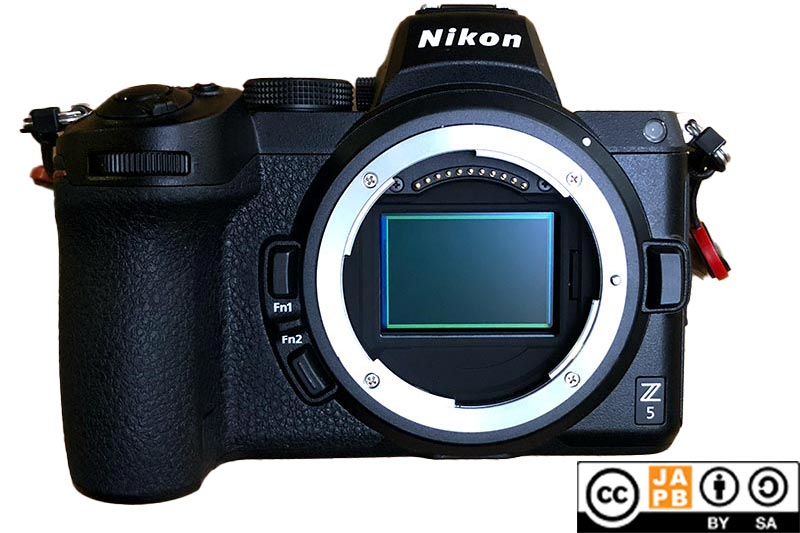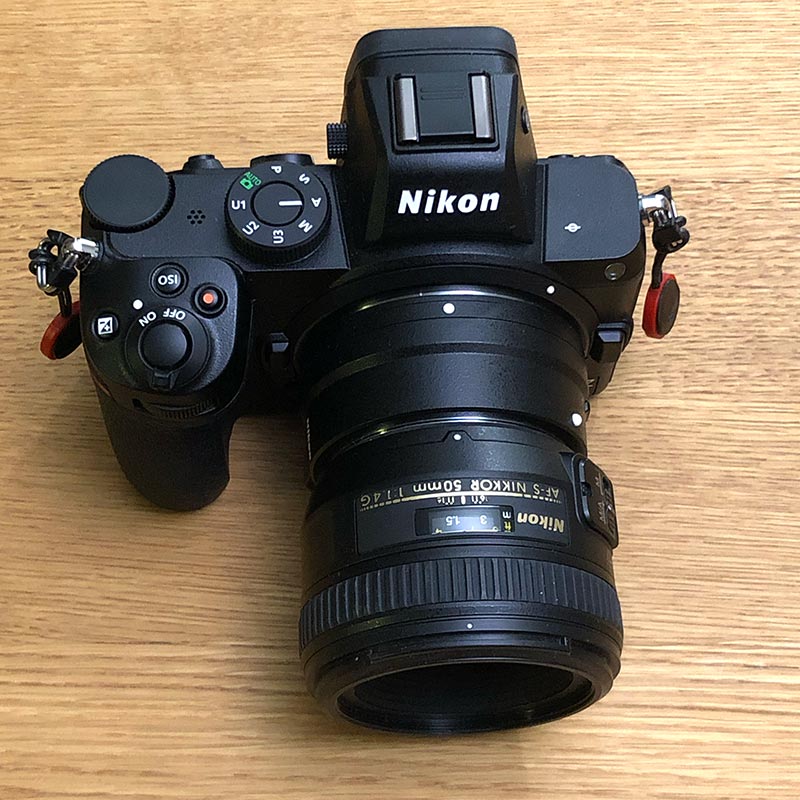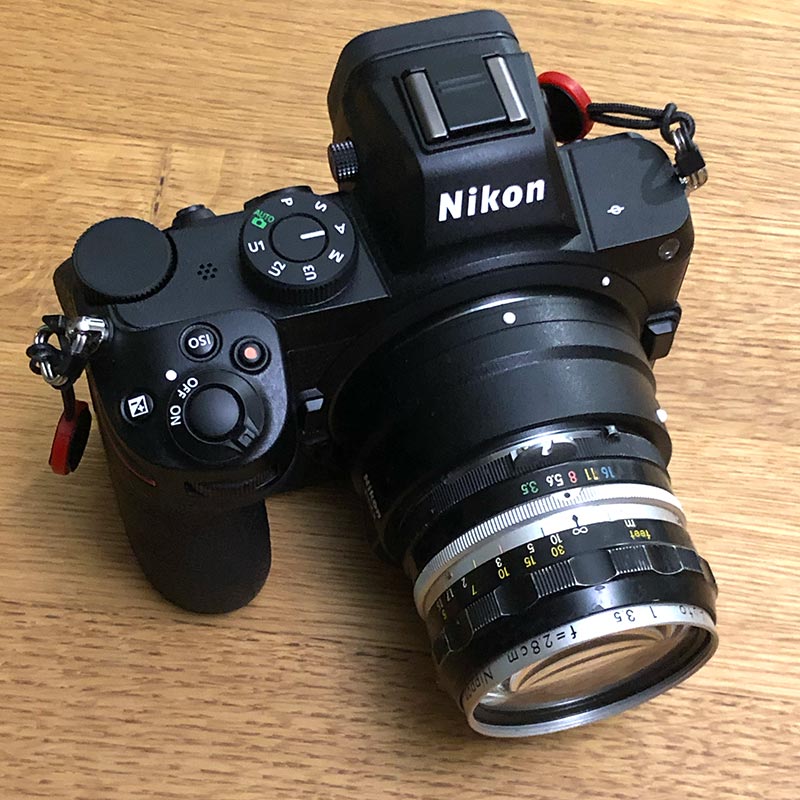Pekka Buttler, February 2023
This article discusses Nikon’s relatively new mount for mirrorless full frame cameras.
Nikon Z mount specifications and identifying
Mount type: Bayonet mount (lens release on camera)
Flange focal distance: 16,00 mm
Sensor Size(s):
• 36,0 mm x 24,0 mm (Full frame or ‘FX’)
• 23,5 mm × 15,7 mm (APS-C or ‘DX’)
Mount communication:
• Electronic-only communication:focusing, aperture control (body-to-lens); focusing distance, lens info (lens-to-body)
• 11 electronic contacts (spring-loaded at the camera-end)

[1] Four-pronged male bayonet. All edges straight.
[2] Locking groove on mount at 03:00.
[3] Bank of 11 electronic contacts between 05:00 and 07:00 (spring-loaded at the camera-end).
Basic Information on the Nikon Z mount:
Nikon introduced the Nikon Z mount together with two mirrorless interchangeable lens, full-frame cameras (the Z 6 and Z 7) in 2018.
For close to 60 years Nikon allowed itself to be constrained by adherence to the Nikon F mount introduced in 1959. This meant that all the changes, modifications and extensions to lens-body communication that ≈60 years of development in the photographic equipment produced had to be accommodated within the constraints of a lens mount introduced prior to exposure automation having been practical on an interchangeable lens camera. Considering that the only other lens mounts that were both older and still being current (meaning that new cameras were produced using that mount) were those that had voluntarily forgone automation and a tighter lens-camera integration (such as the Leica M mount), and how one competitor after the other switched mounts to allow for new functionality, one can get an inkling of the sacrifices Nikon had been forced to make, to retain backwards compatibility the Nikon F mount.
Hence, it’s no surprise that when Nikon finally had to design a new mount, they went all-in and broke with tradition more thoroughly than the competition.
• From having had a mount regularly constrained by its longer-than-average flange focal distance, Nikon decided to go for a mount with a flange focal distance shorter than any of the competition.
• From having had a lens mount wherein the theoretical maximum aperture of the lenses was more constrained by the mount’s throat opening (44 mm diameter in the case of Nikon F) than with the fiercest rivals (Canon FD: 48 mm; Canon EF: 54 mm; Contax/Yashica: 48 mm; Leica R: 49; Minolta A: 49,7 mm; Olympus OM: 46 mm, Pentax K: 44 mm …) to the lens mount with the absolutely largest throat diameter (Nikon Z: 55 mm).

How about Nikon Z’s backwards compatibility? So/so.
Although the Nikon Z lens lineup is growing strongly, there were (at the time of launch) many lenses that were not yet (and some still are not) available in Z-native form. Hence, unsurprisingly, Nikon did as Sony had done before, and introduced a dedicated adapter to allow the use of Nikon F lenses on the Nikon Z bodies. Nikon unimaginatively calls it the FTZ (F To Z) adapter.

However, and to the chagrin of many Nikon users, that adapter works 100% only with those newer Nikon lenses that used a focusing motor in the lens (AF-S lenses), but with AF and AF-D (slot drive) lenses autofocus is not available. Considering that Sony managed to produce an adapter that allowed autofocusing with slot-drive lenses, and that some third-party implementations for slot-drive AF adapters (for Contax G and Pentax K lenses) are in existence, this omission is especially galling.

On the other hand, that adapter is designed in such a way that it will accept any Nikon F lens just as well as any dumb adapter would serve with a dumb adapter.

Adapting Nikon Z lenses
Currently not possible due to extremely short flange focal distance (shortest of any full-frame or APS-C systems).
Adapting lenses to Nikon Z cameras
With Nikon Z offering the shortest flange focal distance in the industry and the greatest throat diameter, practically anything that can be adapted at all can also be adapted to a Nikon Z camera.
That said, there are a number of considerations:
• If the lens is dependent on electronic communications, a suitable smart adapter must be available. As already mentioned, such adapters exist for electronic Nikon F, Canon EF and Sony FE lenses. Whether the future will see the introduction of – say – smart adapters for Sony A / Minolta A, Mamiya Z or Canon RF-mount lenses is anyone’s guess.
• Adapter availability. While the Nikon Z mount has been around for some years, that is not enough to guarantee a wide availability of adapters. Luckily, as has been discussed on JAPB previously, Nikon Z cameras do not necessarily need a native adapter, as Nikon Z cameras can use an adapter ring to ‘step up’ to Sony FE, which has an immense range of adapters available.
• The Nikon Z cameras do not natively support smaller capture areas than APS-C, so it would make things more straightforward (less hassle in post) if the lens was able to project at least an APS-C image circle. Many of those lenses designed for film formats smaller than APS-C (including Pentax-110, C-mount, Olympus PEN-F) regularly cover the APS-C sensor (some even make a good try of full-frame), but this is by no means a given. Hence, it becomes a lens-to-lens question instead of a strictly mount-related issue.

Nikon Z 5, Nikon Z->Sony FE adapter ring, 10 mm Sony FE extension ring, Sony FE->Pentax-110 adapter, Pentax-110 50 mm f/2.8 lens @ wide open, 1/40 s, ISO 360. Resize in ACR, otherwise SOOC. Click for larger image.
(without the extension ring, there is some hard vignetting when on full-frame (!))